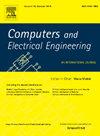Advanced Adaptive Control and Formal Stability Analysis of the N-Level Cascaded H-Bridge Multilevel Inverter fed Single-Stage Grid-Tied PV System Applications with an LCL Filter
IF 4
3区 计算机科学
Q1 COMPUTER SCIENCE, HARDWARE & ARCHITECTURE
引用次数: 0
Abstract
This paper deals with the control process of a single-stage grid-tied photovoltaic (PV) system, consisting of N separate PV panels, N cascaded H-bridge (CHB) inverters, and an LCL filter. The objective is to design a novel controller based on a new decoupling 5th order model to achieve threefold purposes: (i) power factor correction (PFC) by forcing the grid current tracking; (ii) providing maximum power from PV panels and controlling the sum of the squared capacitor voltages; (iii) power exchange balance by regulating the involved capacitor voltages. To fulfill the former objectives, an adaptive nonlinear controller composed of three-loops is synthesized: (i) the inner loop is designed using integral backstepping and Lyapunov approaches for the PFC objective; (ii) the outer loop is formulated using a filtered proportional-integral (PI) regulator for voltage regulation; (iii) the balance loop is designed using PI controllers for voltages balancing. Furthermore, the controller includes a sampled-data adaptive observer to provide online estimation of the grid state variables and the unknown impedance. The stability analysis of the closed loop system is formally proven involving the system averaging theory. The developed controller is evaluated in a 5-level CHB, through simulations in MATLAB/Simulink under different operating conditions. Hence, demonstrating the supremacy of the proposed approach over the PI-based controller.
基于LCL滤波器的n级级联h桥多电平逆变器单级并网光伏系统的高级自适应控制与形式稳定性分析
本文研究了由N块独立光伏板、N个级联h桥逆变器和LCL滤波器组成的单级并网光伏(PV)系统的控制过程。目标是设计一种基于新的解耦五阶模型的新型控制器,以实现三个目的:(i)通过强制电网电流跟踪进行功率因数校正(PFC);(ii)从光伏板提供最大功率,并控制电容器电压的平方和;(iii)透过调节有关电容器的电压,达到电力交换平衡。为了实现前一个目标,合成了一个由三环组成的自适应非线性控制器:(i)针对PFC目标,采用积分反演和Lyapunov方法设计内环;(ii)外回路采用滤波比例积分(PI)稳压器进行电压调节;(iii)平衡回路设计使用PI控制器进行电压平衡。此外,控制器还包括一个采样数据自适应观测器,以提供对网格状态变量和未知阻抗的在线估计。利用系统平均理论对闭环系统的稳定性分析进行了形式化证明。通过MATLAB/Simulink在不同工况下的仿真,在5级CHB中对所开发的控制器进行了评估。因此,证明了所提出的方法优于基于pi的控制器。
本文章由计算机程序翻译,如有差异,请以英文原文为准。
求助全文
约1分钟内获得全文
求助全文
来源期刊

Computers & Electrical Engineering
工程技术-工程:电子与电气
CiteScore
9.20
自引率
7.00%
发文量
661
审稿时长
47 days
期刊介绍:
The impact of computers has nowhere been more revolutionary than in electrical engineering. The design, analysis, and operation of electrical and electronic systems are now dominated by computers, a transformation that has been motivated by the natural ease of interface between computers and electrical systems, and the promise of spectacular improvements in speed and efficiency.
Published since 1973, Computers & Electrical Engineering provides rapid publication of topical research into the integration of computer technology and computational techniques with electrical and electronic systems. The journal publishes papers featuring novel implementations of computers and computational techniques in areas like signal and image processing, high-performance computing, parallel processing, and communications. Special attention will be paid to papers describing innovative architectures, algorithms, and software tools.
 求助内容:
求助内容: 应助结果提醒方式:
应助结果提醒方式:


